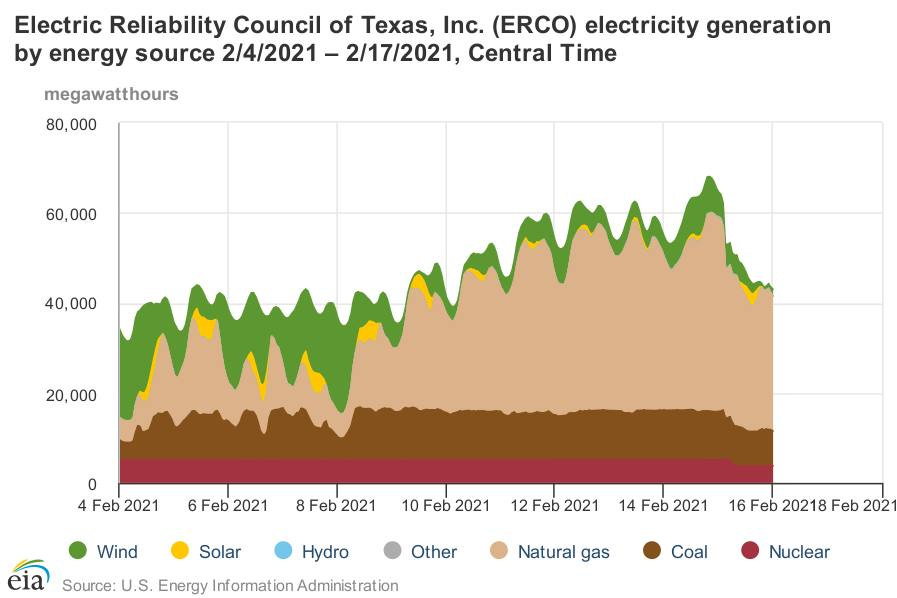From those who oppose the green new deal, the situation in Texas is caused by wind turbines freezing over in West Texas. The Texas energy market has gone crazy for turbines and they cover West Texas like tumbleweed. They froze up and could not produce energy. Those that did not freeze up were running at efficiency rates of about 5%.
From those who support the green new deal, including much of the mainstream media, the wind turbines had nothing to do with the problem. The fossil fuel and nuclear power generation facilities froze over. Valves, coal stacks, pumps, and other equipment froze. Natural gas pressure cratered. We should stop blaming the turbines. In fact, if you followed some reporters online or news stories, you’d think the wind turbines had nothing to do with the problem.
The truth is actually more complex and the truth has a lot to do with Texas’s pursuit of renewable energy.
Put simply, renewable energy is so heavily subsidized by the federal government, energy companies have no financial incentive to expand baseload capacity from fossil fuels and nuclear energy. Not only that, but the wind and solar farms do not have to pay to maintain the reliability of the system like fossil fuel operators do. In other words, there is no ramp up obligation for wind and solar in part because they can’t and they have no incentive to install technology to store their excess power for times the grid needs it. Just check out this chart a friend sent me this morning:
Notice how the nuclear and coal power — the baseload that can stay on and ramp up — has been flat. Notice also how wind and solar output crapped out forcing a ramp up in natural gas.
Texas and other states have no incentive to build baseload capacity because federal subsidies for renewables distort the market. Likewise, maintaining and weatherizing those baseload systems is economically disincentivized by those same federal subsidies. Additionally, most renewal energy systems have no obligations to contribute to maintenance of the existing power grid or ramp up capacity to that grid.
We are no where near the leftwing pipe dream of massive battery storage systems for the wind and solar production that is generated in excess of daily demand. We also need more nuclear power, but nuclear power is the most expensive to build and power companies have no financial incentive to go nuclear when subsidies have prompted demand toward non-nuclear renewables.
Yes, the baseload systems failed in Texas.
Yes, the wind and solar systems failed in Texas.
Yes, because of federal subsidies for the latter, there was no incentive to build more of or winterize the former.
Yes, renewal energies and the policies related to their advance played a role.
But let’s not let facts get in the way of quickie narratives to own the other side.






When real investors put real money into renewables - THAT'S when you'll know the economics is at least promising. As long as they're taxpayer subsidized - fuhgeddabout it
The simple truth about renewable energy showed its ugly head in Texas this past week. The truth is this: To avoid shortages you must have sufficient reliable weather-independent backup power to compensate for the total loss of the renewable sector. As you increase the percentage of wind/solar you must back it up with an equal amount of non-renewable capacity. Furthermore, the backup must be able to come on stream very quickly to avoid outages. This generally means natural gas powered turbine generators.
There is a complicating factor where wind is concerned that no one wants to talk about: Wind generators fail over time and are not easily nor economically feasible to fix. Drive by any wind farm and you see this - a high percentage of the blades are not turning. These towers are broken and impossible to fix without bringing in huge high capacity cranes to fix them. Put simply if the time to tower failure is ten years then you loose 10% of your wind farm capacity each year. Under today's incentives it is cheaper to build new wind farms than fix old ones. In the Pacific Northwest, where I live, we are starting to see abandoned wind farms.